Osteochondrosis of the lumbar spine is manifested by the above-mentioned dystrophic injury of the back, the injury of the intervertebral disc nucleus, and the deformation of the intervertebral joint under the background of the disorder of the ligament apparatus. In this pathological process in the later stage of the disease, blood vessels and even the nervous system are involved.
What is lumbar osteochondrosis?
Lumbar osteochondrosis is one of the most common musculoskeletal diseases in the world. Up to 60% of the population experience irregular pain syndromes in designated areas, one in ten residents is diagnosed with one or another form of osteochondrosis, and almost half of the cases are due to the lumbar and sacral areass failure.
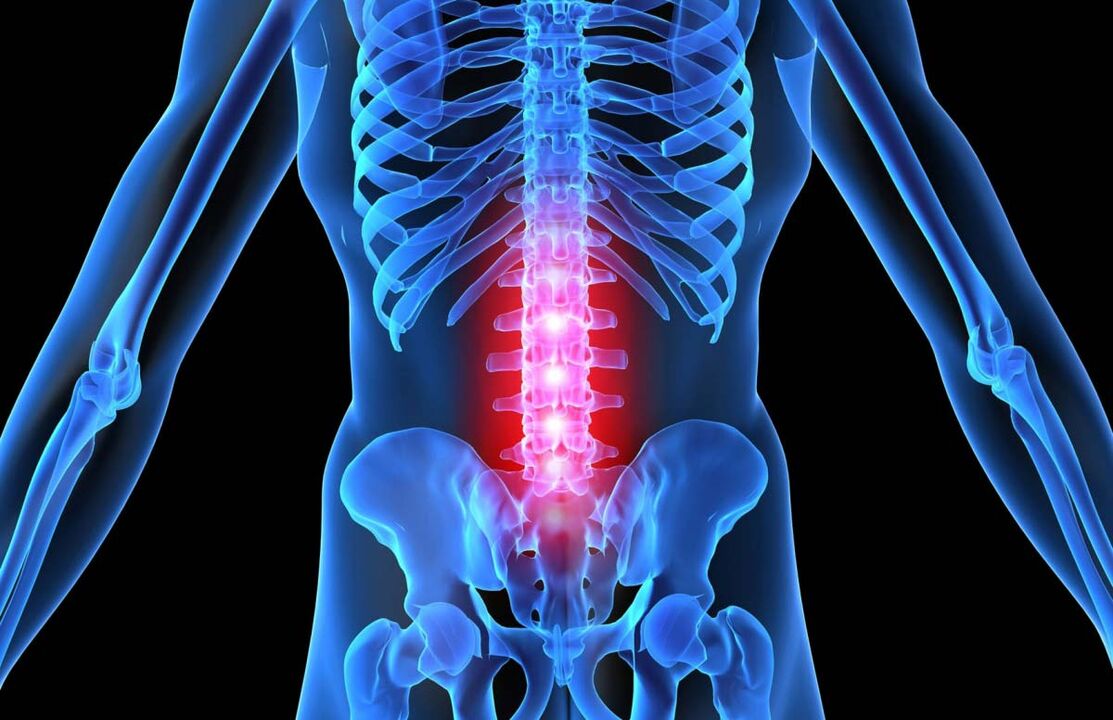
The disease is rapidly "rejuvenating" and even happens occasionally in adolescents and children-it is the fault of a sedentary lifestyle/work, as well as excessive enthusiasm for computer games, lack of adequate physical activity-sports and activeThe game is replaced by staying on the computer for a long time.
However, lumbar osteochondrosis can also occur due to excessive stress, especially when it is aggravated by being overweight. This problem is caused by incorrect posture, back injuries, non-compliance with daily eating habits, and systemic malnutrition.
The negative factors that accelerate the formation of the prerequisites for this type of osteochondrosis are the long-term lack of sleep, stress, and the slowing down of metabolic processes in the body. A separate category is professional athletes.
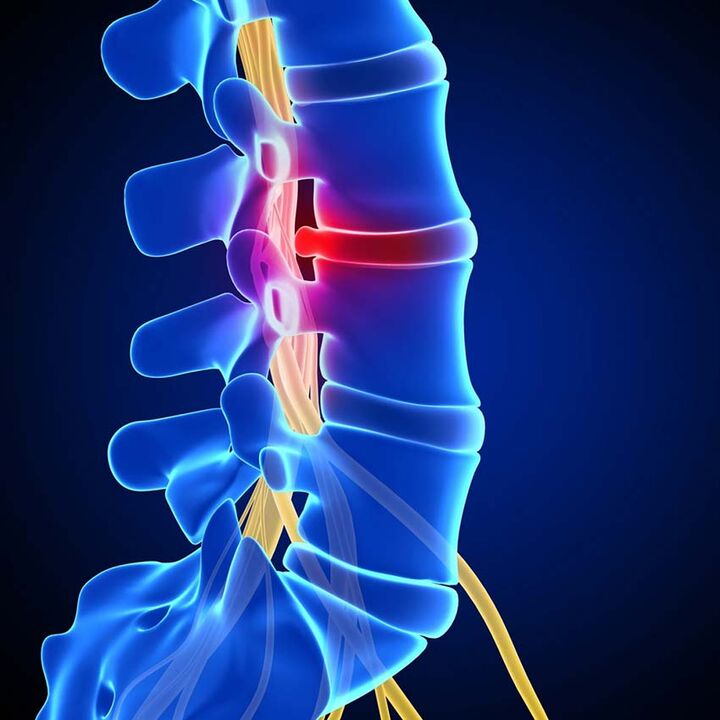
Some experts point out that in some cases, osteochondrosis is the result of a person’s genetic predisposition: at the same time, the intervertebral disc has a loose and porous structure, which is quickly destroyed under the influence of negative pathogenic factors, and the disease will progress and only inLate, sometimes irreversible stages are diagnosed.
A special risk group is patients with rheumatoid arthritis and ankylosing spondyloarthritis, which can trigger the development of the aforementioned autoimmune diseases and complicate the course of the disease.
The first sign. Lumbar osteochondrosis symptoms
Of course, the main symptoms of the aforementioned diseases include pain syndrome. Long-term pain in the waist area of moderate intensity can be replaced by intense "back pain" after active physical work or in an uncomfortable position. Usually, in the supine position, the pain syndrome does not actually appear or disappear completely.
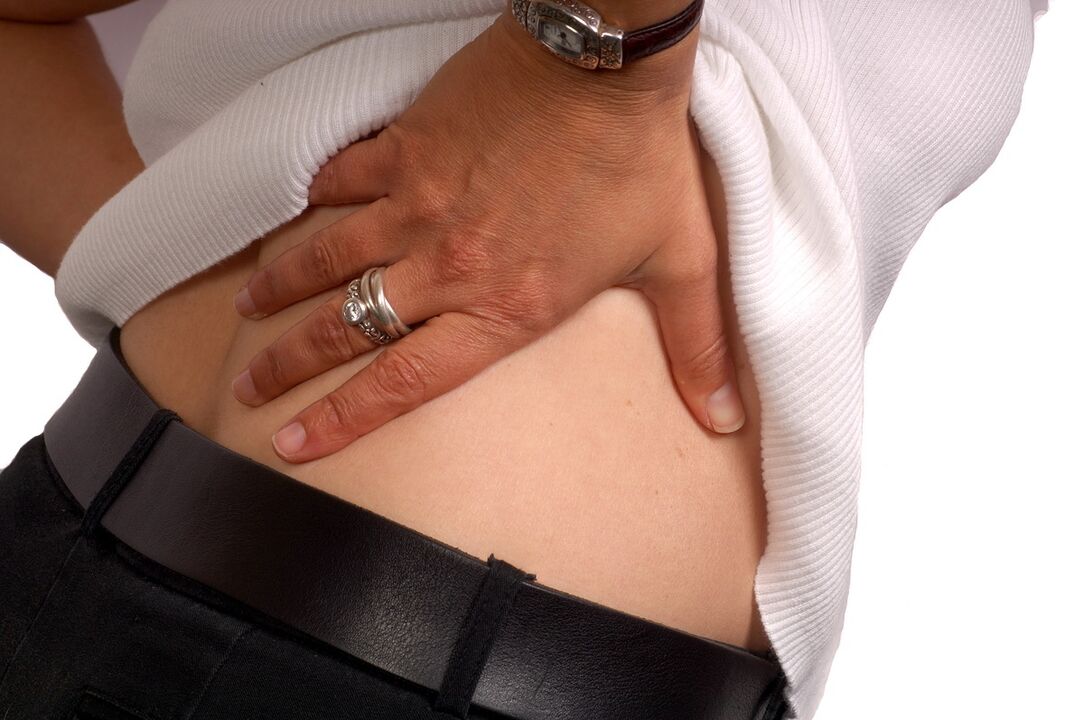
With aggravation, as well as intense physical exertion, hypothermia or non-physiological exercise, the pain syndrome will lose its positioning in the lower back and enter the pelvic area and even the legs.
In detail, the patient developed the following pathology:
Compression of nerve roots
- Root lesions L 1-2: Local pain, loss of sensation in the inner thigh and groin.
- Lesions L-5: Lumbar pain, thumb irradiation.
- Lesions S-1: Pain and numbness on the outer surface of the thighs and feet, and the reflexes of the soles and calves temporarily disappeared.
Arterial disease
Local damage to the DH artery can cause:
- Calf/buttock is often numb.
- Loss of sensitivity in the genital area.
- In rare cases, pelvic motor function is lost.
Vascular compression ischemia
The interruption of blood supply to the spinal cord and other peripheral structures can cause "thinning" of the intervertebral disc structure, which can lead to abnormal spinal movement, osteophyte formation, and new joint disease.
Compressive myelopathy
Narrowing of the spinal canal can cause periodic paroxysmal weakness of the limbs, lower back pain in the "lumbar spine" syndrome, and recoil in the back of the thigh. Under this background, gastrocnemius/gluteal dystrophy/hypotension develops, the plantar, anus, and Achilles tendon reflexes disappear, and the feet are paralyzed.
Treatment of lumbar osteochondrosis
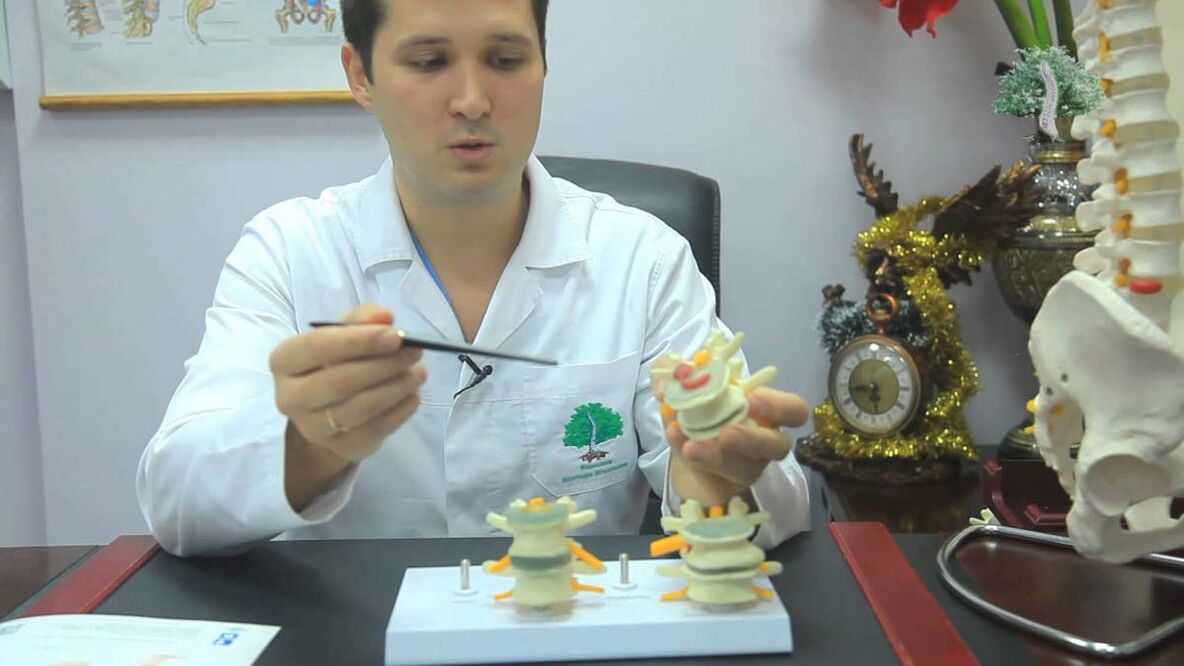
It is possible and necessary to treat this disease. Of course, in this case, only complex treatments will help, the purpose of which is to reduce the symptoms of autoimmune diseases, restore the structure of the spine and prevent the recurrence of the problem.
Comprehensive treatment of the above diseases includes:
- take medicine.
- Block the injection.
- Gymnastics and sports therapy.
- Massage and manual therapy.
- physiotherapy.
Lumbar osteochondrosis preparations
- Relieve people in pain.
- Restore cartilage protective agent.
- Vitamins. Best-Group B.
- injection. Anesthetics, cartilage repair agents and blood microcirculation normalizers.
- Local funds. Corticosteroids and anti-inflammatory drugs.
Lumbar osteochondrosis gymnastics
An important part of spine rehabilitation. All procedures are individually developed to relieve pain and muscle spasms, normalize blood circulation, and restore the work of the intervertebral discs.
Massage treatment of lumbar osteochondrosis
Massage is an indispensable part of the comprehensive treatment of the disease. It helps to relax and train the muscles of the lower back, induce the process of cartilage tissue repair, and relieve pain.
In most cases, treatments, acupressure, hardware, tank vacuum, and connective tissue massage are used for the above-mentioned diseases.
physiotherapy
Usually, physical therapy is prescribed for patients with lumbar osteochondrosis only in the remission stage and after the worsening period of the problem has been overcome.
Modern and classic technology:
- acupuncture. Use a special needle to touch the acupuncture points on the back.
- stretch. The classic technique of stretching the spine on a massage traction bed is performed by a qualified chiropractor.
- Electrophoresis. Since the 1960s, a complex non-surgical method that affects areas affected by external problems has been widely known.
- Traction decompression. Automated hardware spine stretching for special medical complexes.
- Shockwave therapy. Use infrasound to treat osteochondrosis.
- Bone disease. A complex technique that combines elements of chiropractic, massage and therapeutic orthopedics.
- Magnetic puncture. The direct influence of the alternating magnetic field on the spine.
- Laser puncture. The acupuncture points are treated with induced radiation beams.
- Electrical stimulation. Use small alternating current in the affected area.
Prevent lumbar osteochondrosis
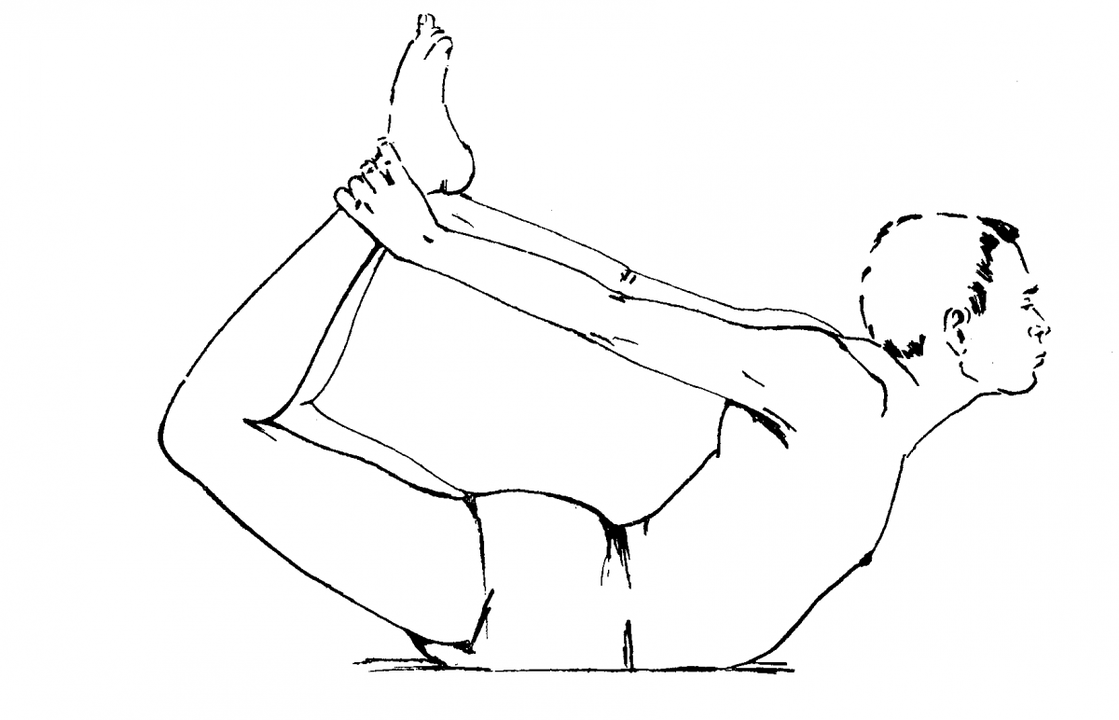
After complex treatments and physiotherapy, long-term supportive therapy is required: during this period, the spine is still weak and needs support. In addition, prevention is to prevent the occurrence of lumbar osteochondrosis. main activities:
- Perform regular balance exercises, preferably under the supervision of a qualified podiatrist.
- Weight normalization: Usually, overweight people are an aggravating factor that affects the formation of osteochondrosis.
- Correct the diet. Regular diet should include foods rich in elements such as calcium and magnesium. In this case, it is worth excluding foods that are too greasy and unhealthy, as well as other foods that do not fall into the definition of healthy food.
- Reject bad habits. Alcohol and smoking will exacerbate all the destruction processes in the body, which also applies to the occurrence of osteochondrosis.
- Correct posture. Be sure to monitor your posture, especially if your work requires frequent sitting in front of the computer or other sitting activities. Also pay attention to your child-how and when he sits down. A normal and correct posture can prevent scoliosis and prevent osteochondrosis in the future.
- Use the right shoes, clothes and accessories, and avoid heavy objects often. Wrong shoes, heavy bags on shoulders, acting as loaders-all these factors sometimes have a decisive influence on the onset of destructive processes in the spine.
Question answer
What kind of pain does this type of osteochondrosis occur?
Lumbar osteochondrosis is characterized by several types of pain. First of all, these are partial unpleasant sensations in the waist, which last for a long time and increase significantly with the increase of people's sports activities and physical labor. If the body remains in a horizontal position for at least 15-20 minutes, this type of pain will disappear.
If the disease is aggravated by hypothermia, long-term heavy physiological stress, or violent "eversion" movements, in addition to the aforementioned background pain, there is also a "shooting" effect that is limited to the pelvic area and radiates downward to the limbs.
Is gymnastics useful for this osteochondrosis?
Therapeutic exercise therapy gymnastics can consolidate the good results of the comprehensive treatment of diseases, partially develop the intervertebral components of the joints, and relax/train the waist muscles. In addition, proper regular massage helps to get rid of the unpleasant pain associated with osteochondrosis.
The attending doctor will develop a specific list of exercises and exercises, the number of methods and the frequency of exercises for you: he will take into account the current stage of the disease, the list of possible contraindications and restrictions, the patient’s condition and recommend the use of exercise in practiceMethods of therapy.


























